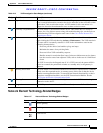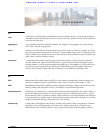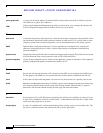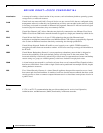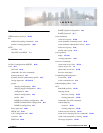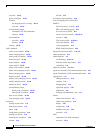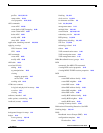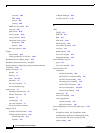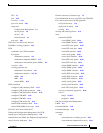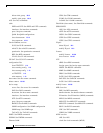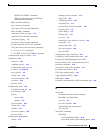
REVIEW DRAFT—CISCO CONFIDENTIAL
Glossary
GL-6
Cisco Prime Network 4.0 User Guide
OL-29343-01
virtualization
A concept of creating a virtual version of any resource, such as hardware platform, operating system,
storage device, or network resources
VLAN
Virtual local-area network (LAN). Group of devices on one or more LANs that are configured (using
management software) so that they can communicate as if they were attached to the same wire, when
in fact they are located on a number of different LAN segments. Because VLANs are based on logical
instead of physical connections, they are extremely flexible.
VPC
Virtual Port Channel (vPC) allows links that are physically connected to two different Cisco Nexus
7000 or Cisco Nexus 5000 series network elements to appear as a single port channel by a third device.
VPLS
Virtual Private LAN Service is a Layer 2 VPN technology that provides Ethernet-based
multipoint-to-multipoint communication over MPLS networks. VPLS allows geographically dispersed
sites to share an Ethernet broadcast domain by connecting sites through pseudowires.
VPN
Virtual Private Network. Enables IP traffic to travel securely over a public TCP/IP network by
encrypting all traffic from one network to another. A VPN uses tunneling to encrypt all information at
the IP level.
VRRP
Virtual Router Redundancy Protocol is a non-proprietary redundancy protocol that is designed to
increase the availability of the static default gateway servicing hosts on the same subnet. This
increased reliability is achieved by advertising a virtual router (a representation of master and backup
routers acting as a group) as a default gateway to the hosts instead of one physical router.
VSAN
A virtual storage area network is a collection of ports from a set of connected Fibre Channel switches,
that form a virtual fabric. Ports within a single switch can be partitioned into multiple VSANs, despite
sharing hardware resources.
VSG
Cisco Virtual Security Gateway is a virtual firewall appliance that provides trusted access to virtual
data center and cloud environments. It enables a broad set of multi tenant workloads that have varied
security profiles to share a common compute infrastructure in a virtual data center private cloud or in
a public cloud.
Y
Y.1731
Y.1731 is an ITU-T recommendation that provides mechanisms for service-level Operation,
Administration, and Maintenance (OAM) functionality in Ethernet networks.




